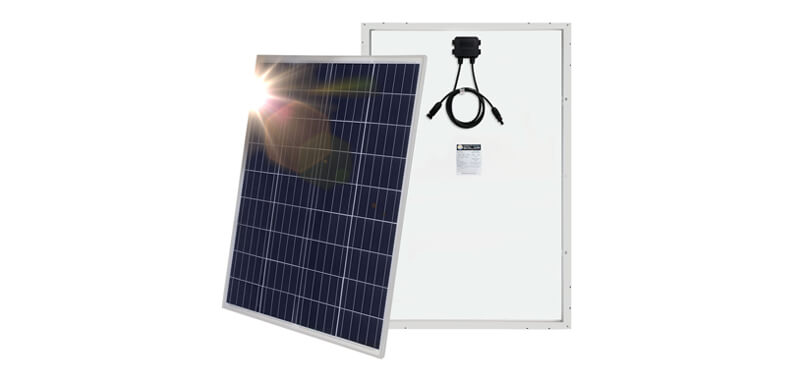Content
1. Theoretical Current Output Calculation
2. Factors That Affect Current Output
3. Real-World Current Output Scenario
4. Current Output vs. Time of Day
5. Estimating Daily Amp-Hour Output
5. FAQs
When working with solar energy, it's essential to understand the power characteristics of solar panels, especially current output. A 100W 12V solar panel is popular for small off-grid applications, such as RVs, boats, and portable systems. This article breaks down how much current you can expect from such a panel under optimal and practical conditions, while also showcasing how environmental factors influence performance. A dynamic line chart is embedded to illustrate how the output current varies throughout the day based on sunlight intensity.

To calculate the current output, we use Ohm’s Law:
Power (W)=Voltage (V)×Current (A)\text{Power (W)} = \text{Voltage (V)} \times \text{Current (A)}Power (W)=Voltage (V)×Current (A)
For a 100W solar panel rated at 12V:
100W=12V×Current (A)100W = 12V \times \text{Current (A)}100W=12V×Current (A)
Rearranging the equation to solve for current:
Current (A)=100W12V≈8.33A\text{Current (A)} = \frac{100W}{12V} \approx 8.33ACurrent (A)=12V100W≈8.33A
Thus, under perfect conditions (e.g., full sunlight, ideal orientation, and no shading), a 100W 12V panel can produce approximately 8.33 amps of current. However, actual conditions are rarely perfect, so it's essential to consider real-world factors.
Several factors impact the actual current generated:
1. Sunlight Intensity: Panels generate more current under bright sunlight and less on cloudy days.
2. Temperature: High temperatures can lower the efficiency, reducing the current output.
3. Orientation and Tilt: Aligning the panel correctly with the sun optimizes current generation.
4. Shading: Even partial shading can significantly reduce the panel's current output.
5. Panel Age and Cleanliness: Dust and aging may reduce the panel's ability to generate current.
On a clear sunny day, the current output can fluctuate based on the time of day. In the early morning and late afternoon, the current will be lower, while it peaks around solar noon (when the sun is highest). On an overcast day, the panel may only generate a fraction of its potential current output, sometimes around 30-60% of the rated capacity.
Chart that simulates the current output of a 100W 12V solar panel over a typical sunny day.
This chart shows how current output increases gradually in the morning, peaks around 12 PM to 2 PM, and declines toward the evening. Note that actual values will depend on geographic location and weather conditions.
To determine the total daily amp-hours, you need to integrate the current over time.
For example, if the panel generates an average of 5A for 5 hours of peak sunlight:
5A×5 hours=25 Ah (amp-hours)5A \times 5 \, \text{hours} = 25 \, \text{Ah (amp-hours)}5A×5hours=25Ah (amp-hours)
This means the panel could deliver 25Ah per day, sufficient to charge a battery for small devices.






